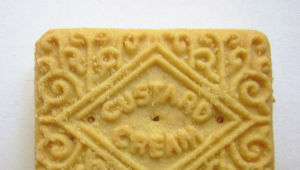I’m ten years old and at my own suggestion my brothers and sisters have just tied me to the garden swing outside my house. Minutes earlier I had bragged that I could escape from anything and challenged them to tie me. I was positively certain that I could get out. The trick, you see, was to maintain a little slack behind your back during the knotting process. Problem was, in the midst of my childish braggery I had forgotten to tense my body and create the essential amount of slack. Adding further insult, my siblings had taken advantage of my self-imposed bondage and thrown freezing cold water on me before leaving me alone in the garden. I am stuck tight, teeth shatteringly cold and I can see them laughing at me from the warmth of the living room window.
The reason for my cockiness and crude attempts at showmanship was down to a man named Ehrich Weiss who I had discovered days earlier through a television documentary. Ehrich Weiss was the man that could not be bound. Over 80 years before he had been shackled inside a packing crate and thrown into the icy and turbulent waters of New York’s East River. After several minutes the small crazy Hungarian with a high pitched voice, known as Ehrie to his friends and Harry to everyone else, was still yet to surface. The crowd began to grow nervous and the hacks began scribbling on their notepads hoping for the worst before suddenly, a hand broke free from the depths followed quickly by a grinning face. He had done it again. Harry Houdini had escaped from the impossible. He had looked death straight in the face and he had survived.
The son of a Rabbi and one of seven children, Weiss was born into relative poverty on March 24, 1874 in a small house in Budapest, Hungary. Later he would claim to have been born in Appleton, Wisconsin where his family emigrated when he was four years old. A natural performer, Weiss’ first taste of show business came aged nine during a brief stint as a trapeze artist billed as, ‘The Prince of The Air.’ An early sign perhaps of the many death defying feats he would come to perform in later years.
Moving from various jobs and towns as a teenager it was whilst working in a factory aged seventeen that he met Jack Hayman. Discovering a shared interest in magic and inspired by the success of other performers at the time like Harry Keller, the pair decided to try their hand as magicians. Christening themselves as ‘The Brothers Houdini,’ in a homage to a pioneering French magician named Jean Eugene Robert Houdin they developed an act and set to work.
After a short time performing as a duo and later swapping Hayman for his real brother, Theodore, Weiss eventually began taking to the stage as a solo performer. Billing himself as, ‘Harry Houdini The King of Cards,’ he played the toilet circuit of the time, demonstrating classic card tricks and manipulations. He would frequently appear on low billings at dime museums and side shows and his act met with minimal success.
More...
The Pirates, Druglords & Oil Barons of Africa’s Major Warzones
Just A Little Crash: One Soldier’s Thoughts And Feelings On The Road To War
After several years on the vaudeville circuit struggling to find the success that he strived for, at one point he considered turning his back on performing completely. Even going as attempting to sell his entire act for just $20 in a magazine and end his career for good. An action that only proved further woe for the performer when not a single person showed any interest. It was during this time that aged twenty-four Houdini began to develop his Challenge Escape Act in 1898. The premise was the simple challenge that no man could contain him. Harry would stroll into a town, book a theatre and boast that he could escape from anything. Starting with relatively standard rope escapes before developing his act to include more complicated shackles likes handcuffs, he remodelling himself as, ‘The Handcuff King.’ Word of his escapes began to spread throughout America and his performances quickly began to sell out. His act capturing the hearts and souls of the public, a literal symbol and badge for the working class, the ability to overcome all odds through strength and sheer determination. Houdini had found his niche.
A master of publicity he would often arrive at police stations days before a performance and challenge them to lock him in their cells before escaping unnoticed. He began dreaming up bigger and more dangerous escapes, recognising the blood lust of the modern audiences to see him fail. As he would later remark, “Nobody wants to see a man die, but everyone wants to be there when it happens.”
From handcuffs, milk cans, straitjackets and packing crates, there was nothing that he could not escape from. One of his most famous escapes, The Chinese Water Torture Cell, is still performed today by many magicians. The act would have a handcuffed Houdini lowered vertically upside down into a tall tank of water with his feet locked in stocks. The glass cell would then be surrounded by a curtain as he made his escape during which he would often be required to hold his breath for up to three minutes.
His act took him all around the world, performing in every continent for both royalty and the public alike. During one early tour, he arrived in London to find much to his dismay that he was a virtual unknown. In order to drum up some publicity for his upcoming shows he visited Scotland Yard, stating to the Superintendant of the time that he was an escape artist. The police, disbelieving him promptly cuffed him around a pillar with the Superintendent mocking, “We will see you in an hour, young man. This is what we do to Americans who come over here and get into trouble.” Houdini simply shrugged and threw the now unlocked cuffs at his feet retorting, “and this is how we Americans get free.” His shows sold out instantly.
George Bernard Shaw once remarked that he was the third most famous person on the entire planet, just after Jesus Christ and Sherlock Holmes, and it’s easy to believe it.
Not content with just dominating the magic world, Houdini also bank rolled his own films, casting himself in the main roles and performing all his own stunts. He also turn his hand to inventing – at one point holding the patent for an innovative new diving suit and even took on the relatively new art of aviation, becoming the first person to fly an airplane in Australia. He was the first true example of a global superstar, extending his name to anything and everything. George Bernard Shaw once remarked that he was the third most famous person on the entire planet, just after Jesus Christ and Sherlock Holmes, and it’s easy to believe it.
During the 1920s, after the death of his mother and during the boom of spiritualism, he would devote himself to exposing fraudulent mediums. Never far from a challenge, he declared himself un-foolable, stating that anyone that could show him a demonstration of supernatural abilities that he could not replicate would win $10,000 of his own money. A prize that despite many attempts, remained un-payed right until his death..
His death, fittingly on Halloween 1926 came as the result of peritonitis agitated further by a ruptured appendix. Legend has it that the rupture was caused several days earlier by student J. Gordon Whitehead. Wanting to test the magician’s claims that he could take any blow above the waist without injury, Whitehead struck Houdini multiple times before he had time to prepare. Effectively, according to belief, causing the internal damage that lead to his death. Later enquiries would suggest that Houdini was in fact suffering from appendicitis for several days prior to the meeting. Even more recently though, new theories would suggest that he may have actually been murdered by disgruntled spiritualists – casting further mystery around his death. Considering the fact that an autopsy was never carried out on the performer’s body, it seems unlikely that the truth will ever be really known for certain.
One thing that is though, is the message that Houdini left behind. That anything is possible. That anything can be done with the right amount of perseverance, effort and strength. He never shirked a challenge in his life, right up until his death and was never seen to lose. A message that held true in my own mind all those years ago. Fighting against the cold and the splinters digging into my back as I eventually escaped from my ties after over half an hour of struggle. It may have been both my first and last attempt at escapology but I had proved something that day. That with enough gall and effort, nothing was out of my reach. I like to imagine that if Houdini could have seen me he would have probably smiled – before upping the ante even further to rapturous applause.


